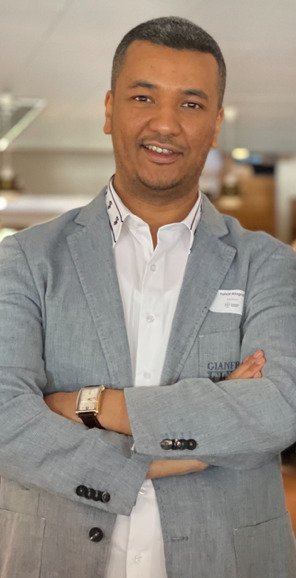New thesis provides insights that could contribute to safer and more personalised treatment of leukaemia

Faisal Alagrafi from the Center for Hematology and Regenerative Medicine (HERM) at the Department of Medicine, Huddinge (MedH) defends his thesis titled "The Role of gamma delta T Cells in Haematopoietic Stem Cell Transplantation and Malignancies", on 26 September, 2025. Main supervisor is Michael Uhlin (MedH).
What is the main focus of your thesis?
The main focus of my thesis is the role of γδ T cells in allogeneic hematopoietic stem cell transplantation (aHCT) and their potential in treating blood cancers. In aHCT, patients receive healthy immune cells from a donor, and γδ T cells are among the first to recover, helping to fight infections and destroy leftover cancer cells. I studied how well these cells bounce back compared to healthy donors and which γδ T-cell subtypes are linked to better or worse patient outcomes. I also explored innovative therapies, including a bispecific T-cell engager (BTE) antibody that directs γδ T cells to attack leukemia cells, and a natural compound called thymoquinone (TQ), which can make leukemia cells more vulnerable to immune attack.
Which are the most important results?
In study I, we found that γδ T cells in transplant patients recover to normal levels and resemble those of healthy donors. Some subtypes offer long-term protection against viruses (CMV), while others are linked to complications like graft-versus-host disease (GVHD).
In study II, we tested a new immunotherapy BTE antibody, which connects γδ T cells to leukemia cells. This boosted the cancer-killing ability of γδ T cells and could be a safer option for patients who can't tolerate strong chemotherapy.
In study III, we used a natural compound TQ to make leukemia cells more visible to γδ T cells. TQ increased key surface markers on cancer cells, enhancing their destruction by γδ T cells even at low, non-toxic doses.
How can this new knowledge contribute to the improvement of people’s health?
Better understanding of γδ T cell recovery and its link to clinical outcomes can help improve treatments in the aHCT field. By identifying a specific γδ T cell subtype associated with complications like GVHD opens the door to future targeted therapies. Our findings also highlight the enhanced antileukemic potential of γδ T cells when combined with BTE immunotherapy and the natural compound TQ. Together, these strategies may offer a safer, more personalized approach to treating leukemia.
What are your future ambitions?
Based on these findings, I aim to study γδ T cell recovery in more transplant patients to strengthen the evidence. I’m also interested in testing the combination therapies using γδ T cells with BTE or the natural compound TQ on leukemia in animal models. This is a key step toward developing new medical treatments.
Dissertation
Friday, 26 September, 09:00, Erna Möllersalen, Neo, Campus Flemingsberg / Online
Thesis
The Role of gamma delta T Cells in Haematopoietic Stem Cell Transplantation and Malignancies
